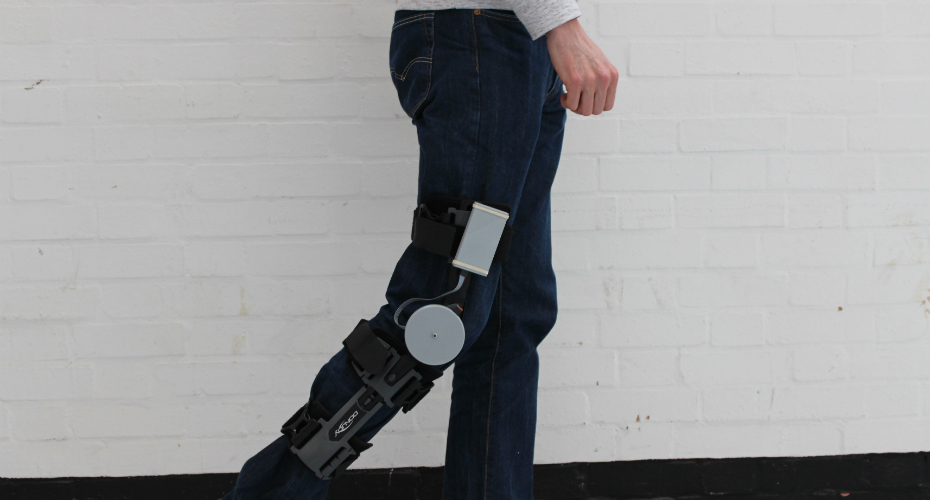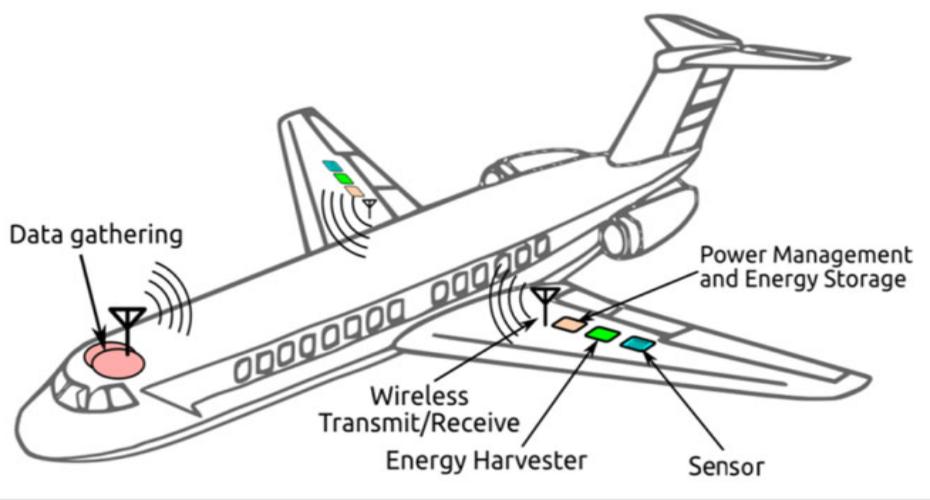Energy Harvesting
This theme focuses on the design, modelling and characterisation of kinetic energy harvesting transducers to produce usable electric power for a wide range of industrial applications. The kinetic energy sources we are working on include but not limited to: human motion, machine/bearing vibration, rail track vibration, dynamic strain on structure (e.g. aircraft wing) surfaces, air flow and pipeline vibration. The sub-areas we are researching include:
- Strain energy harvesting
- Vibration energy harvesting
- Wearable energy harvesting
- Broadband energy harvesting
- Airflow energy harvesting
The strain energy harvesting converts the dynamic strains of engineering structures, such as aircraft wings, to usable electric power for wireless structural health monitoring systems. We developed novel integration technologies to seamlessly bond piezoelectric materials onto curved structures and finite element model to precisely predict the performance of strain energy harvesters. A strain energy harvester with a size of 85×28×0.3 mm3 is able to produce 3.5 mW electric power when actuated at a dynamic strain of 300 microstrains, 10 Hz.
To further improve the power output of strain energy harvesting, we are currently researching on auxetic metamaterials. The preliminary proof of concept using a single re-entrant hexagon as the auxetic substrate under the piezoelectric element has demonstrated 14.4 times the power obtained using an otherwise comparable solid substrate, under the same excitation. This method thus shows promise for increasing the power output of future energy harvesting transducers.

Piezoelectric material co-cured into carbon fibre composite structure

Auxetic metalmaterials used to improve the power output of strain energy harvester
Related Publications:
- Auxetic structure for increased power output of strain vibration energy harvester
- Auxetic piezoelectric energy harvesters for increased electric power output
- Evaluation and validation of equivalent properties of macro fibre composites for piezoelectric transducer modelling
- Energy harvesting behaviour for aircraft composites structures using macro-fibre composite: Part I – Integration and experiment
Our vibration energy harvesting targets motions at extremely low-frequencies (e.g. wave motions at 0.3-1 Hz) as well as vibrations at middle/high frequencies (e.g. vibrations of compressors in the range of a few hundred Hertz).
We developed a piezoelectric energy harvester with high electric power output (up to ~100 mW) for low-level vibrations (0.05-0.5 g). The energy harvester was designed with measures to ensure its long lifetime even in harsh industrial environment. The energy harvester is able to produce 1.5 mW with acceleration as low as 0.05 g and about 100 mW at 0.5 g, with a resonance frequency of 150 Hz and a half-power bandwidth of 15 Hz. The resonance frequency can be tuned to suit different applications.
More information will be released soon.
Plucking mechanism for knee energy harvesting
We developed mechanical and magnetic plucking mechanism to convert low-frequency motions to the high-frequency resonant vibrations of energy harvesters, thus enabling high-efficiency and high-power output of power generation. This mechanism was successfully used for knee-motion energy harvesting, which aimed to provide electric power for wearable sensors. The developed knee-motion energy harvester is able to produce average power of 5.8 mW when walking at 1 step per second.

Magnetic plucking of piezoelectric bimorphs for knee motion energy harvesting
Footfall energy harvesting to charge mobile phones
We developed footfall energy harvesters with the aim of charging portable electronic devices such as mobile phones and tablets. The footfall energy harvester we developed is able to produce average power of 1-2 Watts with minimum impact on the user.
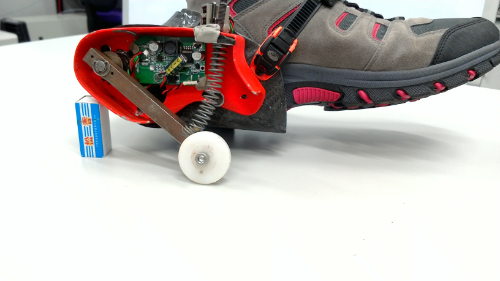
Footfall energy harvester capable of charging smart phones
Related publications
We developed and patented a novel nonlinear magnetic rolling pendulum (MRP) for broadband energy harvesting. It consists of two coils and four neodymium (N42) magnets magnetized along their thickness direction. Magnets B, C and O are fixed to the frame, while magnet A is free to move. The polarisation direction of A is the same as B and C but opposite to O. As a result, A is attracted by O but repelled by B and C. Magnet O constrains the motion of A on its surface. Magnets B and C provide a nonlinear magnetic spring force, which can be adjusted by the dimensions and positions of B and C. When excited, magnet A rolls on the surface of magnet O. Two coils are placed symmetrically along the passage of magnet A. As magnet A passes by the coils, it introduces variation in the magnetic flux in the coils and thus produces electricity.

Magnetic rolling pendulum for broadband energy harvesting
The MRP can be excited horizontally and vertically. When excited horizontally, it is a nonlinear system subjected to a direct excitation. In this configuration, in addition to the usual primary resonance, the MRP showed a secondary resonance region with similar power output but even wider power bandwidth than the primary resonance. When excited vertically, the MRP is a parametrically excited nonlinear system. In this configuration, the MRP produced a peak power of 3.6 mW with a half-power bandwidth of 4.8 Hz. The frequency range can be manipulated to suit different applications.
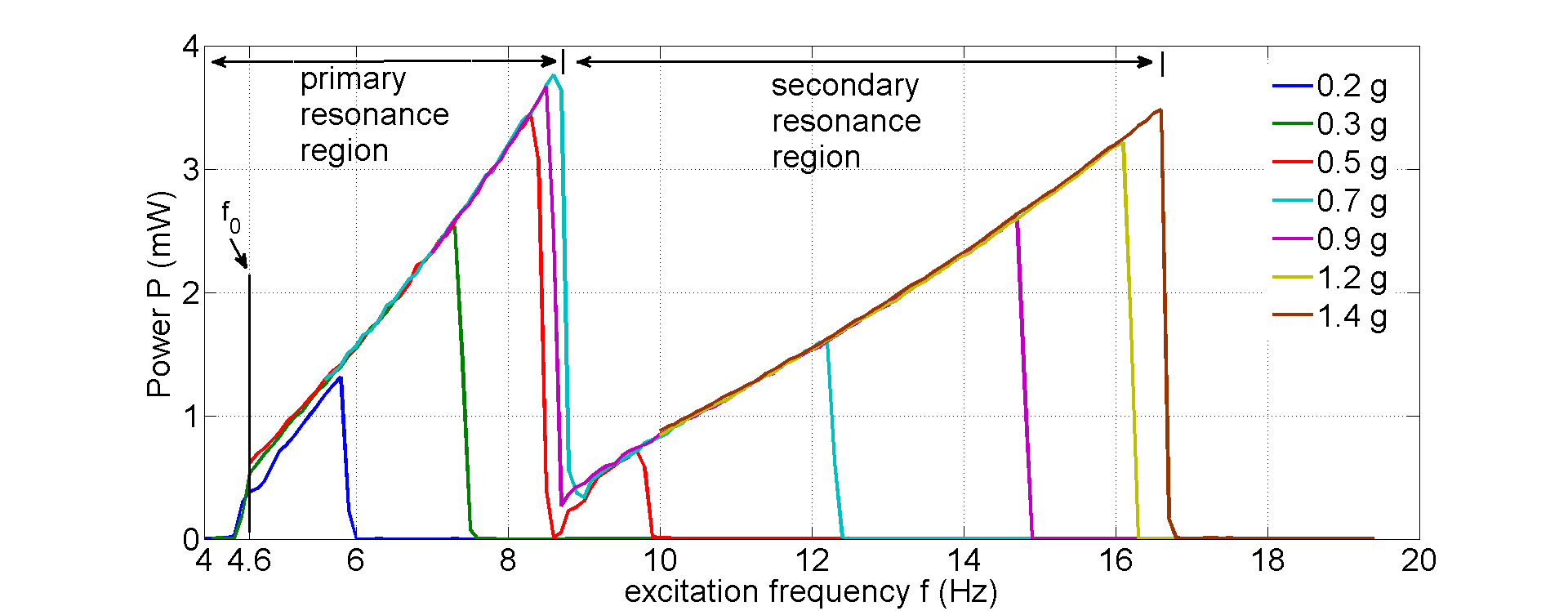

Electric power outputs of the magnetic rolling pendulum under direct excitations of different accelerations 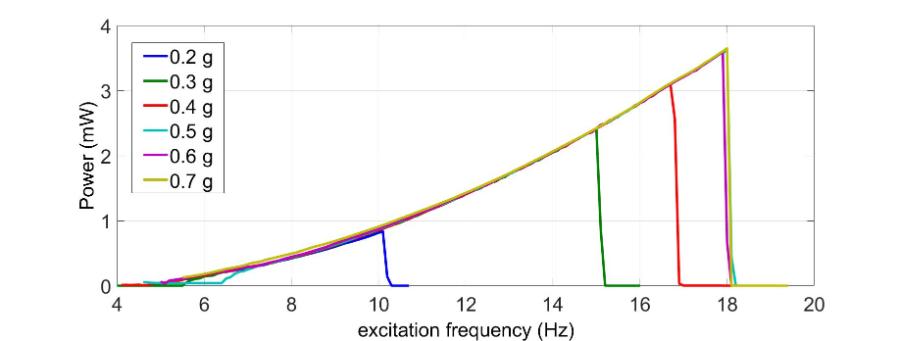
Electric power outputs of the magnetic rolling pendulum under parametric excitation of different accelerations
Related publications
- Parametrically excited nonlinear magnetic rolling pendulum for broadband energy harvesting
- Magnetic rolling pendulum with primary and secondary resonances for broadband energy harvesting
Our patented airflow energy harvester is designed to harvest energy from vortices generated by high-speed objects (e.g. inside the vents and fairing of an aircraft), to provide energy sources for wireless sensors. With a weight of 13.4 gram, the airflow energy harvester is able to produce 20-160 mW when the wind speed is 10-18 m/s.
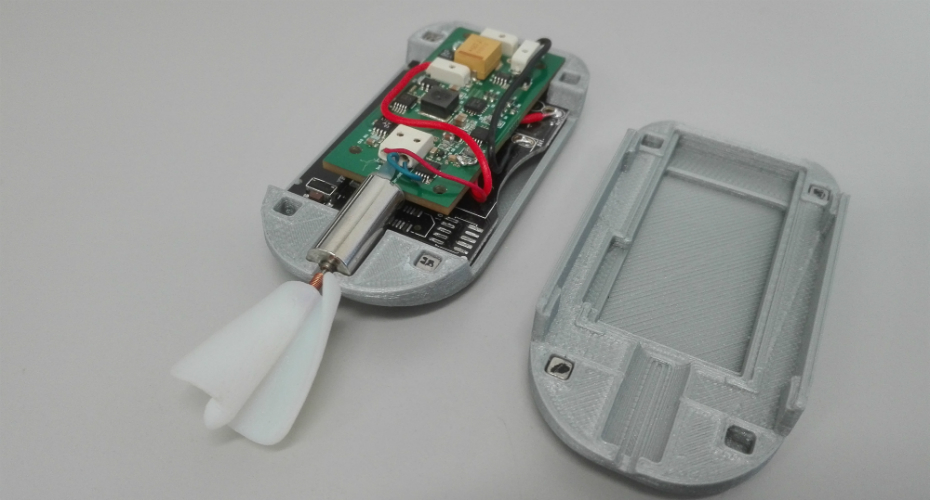
Related Publication:

